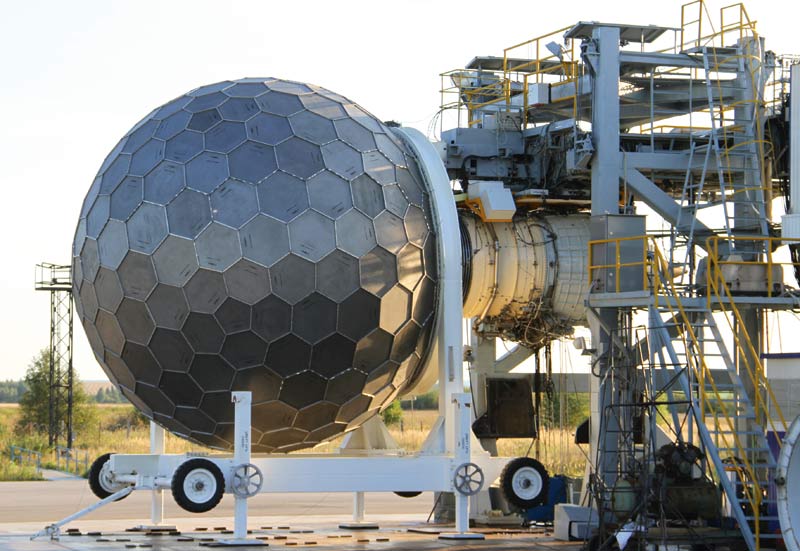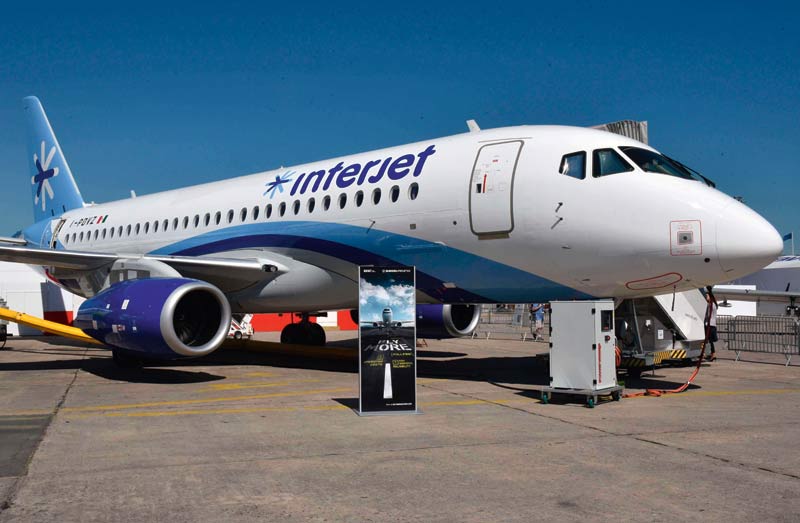As commercial aircraft programmes enjoy a surprising renaissance in Russia, so too are the makers of turbofan engines.
Russia did not start developing gas turbine engines for more than a decade after the Germans and British pioneered the technology in the early 1930s, but caught up rapidly. By the 1960s, low-bypass Soloviev D30 turbofans proliferated across the Soviet's largest airliners, such as the Tupolev Tu-154 and Ilyushin Il-62s.
As a new class of high-bypass turbofan engines entered Western fleets in the 1980s, Russia's Aviadvigatel, which literally means "aircraft engine", responded when the high-bypass PS90 entered service in 1993. The 40,000lb-thrust class engine was designed to compete with the Pratt & Whitney PW2000 for military and commercial applications.

Rig testing of the PD-14 will lead to its use on Irkut's MC-21 twinjet
United Engine
The PS90 served its purpose with applications on the Ilyushin Il-76 and Tupolev Tu-204, but that represented a niche market. The economic crisis in post-Soviet Russia prevented the industry from developing a high-bypass turbofan for single-aisle applications for another 20 years.
Russia's belated answer to the International Aero Engines V2500 and CFM International CFM56 is now in flight testing as the PD-14. As has become tradition for Russian commercial engines, it is designed by Aviadvigatel and manufactured by Perm.
Scheduled to achieve Russian and European certification between 2018 and 2019, the 31,000lb-thrust high-bypass turbofan will serve initially as an indigenous alternative to the P&W PW1400G now in flight test aboard the Irkut MC-21, but the new engine core could be reapplied in several other applications. Taking a page from the Rolls-Royce AE3007 turbofan, which was adapted from the AE1107 turboshaft engine, Aviadvigatel has started developing a turboshaft version of the PD-14. The first application is an effort to replace Ukrainian-built engines for the Mil Mi-26 heavy-lift helicopter.
Russia's collaboration with China to develop a new twin-aisle airliner offers another opportunity for United Engine (UEC), the parent company of Aviadvigatel and other Russian engine designers, such as Saturn and Kuznetsov. The CRAIC joint venture formed by United Aircraft and Comac plans to power the aircraft with GE Aviation or Rolls-Royce engines, but also offer a choice of Russian- and Chinese-made alternatives.
For UEC, the engine for the future twin-aisle aisle aircraft will be the 77,000lb-thrust class PD-35, a new core featuring technology mastered under the PD-14 programme.
"As in the case of the PD-14 engine, a family of high-thrust engines could be developed on the basis of the future PD-35 engine," UEC tells FlightGlobal in emailed answers to questions.
"UEC has started development of technologies in order to reach TRL-6 level before starting the [research and development] work," UEC adds. "All the issues concerning the development and production of the future engine have been incorporated in a pool of advanced technologies. The work schedules are already set."

PowerJet venture with Snecma is upgrading Superjet's SaM-146s
Ogretmen Ibo/SITA/Rex/Shutterstock
In the meantime, UEC is focused on delivering the PD-14 engine for the MC-21. After a series of ground-based rig tests, Aviadvigatel has run two series of flight tests aboard a four-engined Ilyushin Il-76 testbed at the MM Gromov Flight Research Institute in Zhukovsky.
"The tests had been conducted at all operational speeds, altitudes and thrust ranges," UEC says. "The workability of the engine in real operating conditions has been confirmed. The flight trials will be continued this year."
Ground-based testing on the PD-14 has checked off a series of the most challenging engine tests, including blade-out, wind shear and foreign objection ingestion. Later this year, Aviadvigatel will perform another series of tests to gather data on the engine's endurance. The goal is to perform tests that will be accepted by Russian authorities as well as European and American regulators.
"The tests have confirmed that the design configuration of the PD-14 engine is correct," UEC says. "For the moment we are in the process of certifying PD-14 and the testing results are being accepted by a certifying body."
In addition to the MC-21, UEC is involved in another major commercial engine programme. Its subsidiary NPO Saturn partnered with Snecma 20 years ago to develop a new engine to power the Superjet. The joint venture, PowerJet International, is integrating a new engine core derived from the Snecma M88 and a low-pressure section developed by Saturn.
To support a series of improvements launched by Sukhoi Civil Aircraft (SCAC), PowerJet has developed and certificated three engine modifications that raise total thrust of the SaM146 by 5%. An additional 2.5% thrust improvement is possible, UEC says, with no expensive hardware changes.
"It could be achieved by just regulating the FADEC software and it doesn't require any changes in the engine's hardware, which means that there is no need for any additional trials," UEC says. "The [higher-thrust] engine remains in line with its certification basis."
Source: Flight International



















